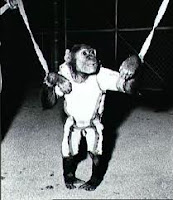Posted on November 30, 2019
I thought that "Cities for Life Day" was probably about planning cities so we can have good, healthy lives. You know, rooftop gardens, solar panels over parking lots, walkable city centers, modern electric people movers...
But that's not today's deal at all. Instead, Cities for Life Day is about abolishing the death penalty!
On this date waaaayyyy back in 1786, the Grand Duchy of Tuscany abolished the death penalty. It was the first country in the world to do away with what we euphemistically call capital punishment.
In other words, the judicial system couldn't punish a criminal by ruling "Off with his head" or "Hang by the neck" or any other form of killing.
 The Grand Duchy of Tuscany made this ruling because of a treatise written by Italian Enlightenment writer and jurist Cesare Beccaria. He wrote that the criminal justice system should be based on rational principles. This treatise is considered a masterpiece and has been translated into 22 languages.
The Grand Duchy of Tuscany made this ruling because of a treatise written by Italian Enlightenment writer and jurist Cesare Beccaria. He wrote that the criminal justice system should be based on rational principles. This treatise is considered a masterpiece and has been translated into 22 languages.
And in the more-than-two-centuries since Tuscany banned the death penalty, at least 141 other nations have abolished the death penalty. The United Nations has called on ALL nations to do so.
Wow! So many nations have banned the death penalty. What about the U.S.?
Yikes! As in so many other ways, in regards to abolishing the death penalty, the United States is out of step with most of the other developed nations. However, at least 17 U.S. states have banned it, and some that have not banned the death penalty (like my own state of California) at least have a moratorium on executions.
What would it mean to use rational principles to decide whether or not to have the death penalty?
We could ask a series of questions and then answer them using data and other kinds of evidence, or by using logic and reason. Here are some examples of good questions:
1. Does having the death penalty make people think twice about committing crimes? In other words, is it a deterrent?
No. The evidence OVERWHELMING shows that the death penalty has no deterrent effect.2. Is the death penalty justice for a murderer, at least in an eye-for-an-eye kind of way?
No. Data show that poor people and people of color who have been convicted of murder are more likely to be executed than are rich white people who have been convicted of murder - which is definitely not fair. Even worse, there are cases in which evidence (such DNA evidence) has proven that a person who has already been executed wasn't guilty of murder, after all!
Getting back to the Cities for Life Day...
Many important cities around the world, including many national capitals, have chosen to light up a landmark in a symbolic way on this day. We're talking more than 70 capitals and more than 1,600 other cities - everywhere from Vienna, Austria, and Bogotá, Colombia, to Dallas, Texas, U.S., and
Mexico City, Mexico.
Also on this date:
Plan ahead:
Check out my Pinterest boards for:


























































